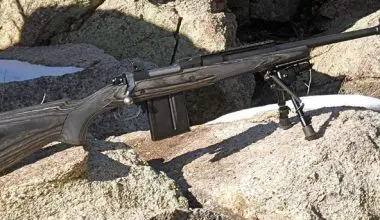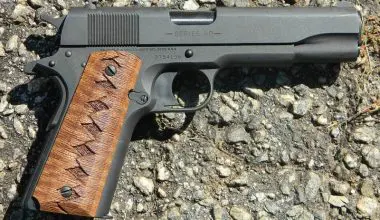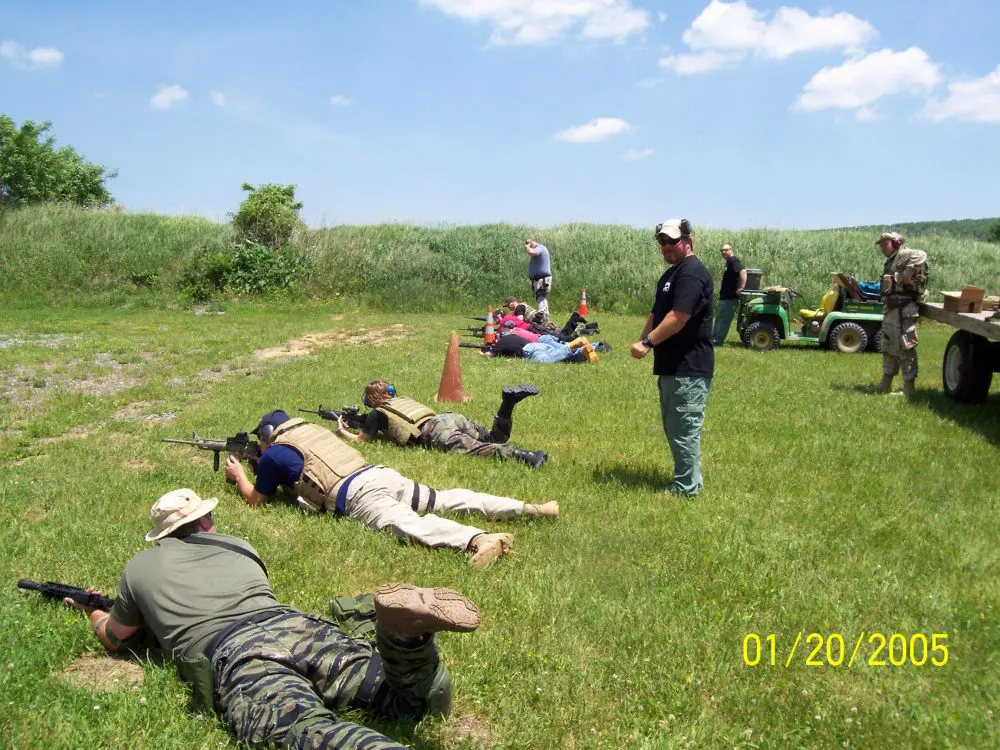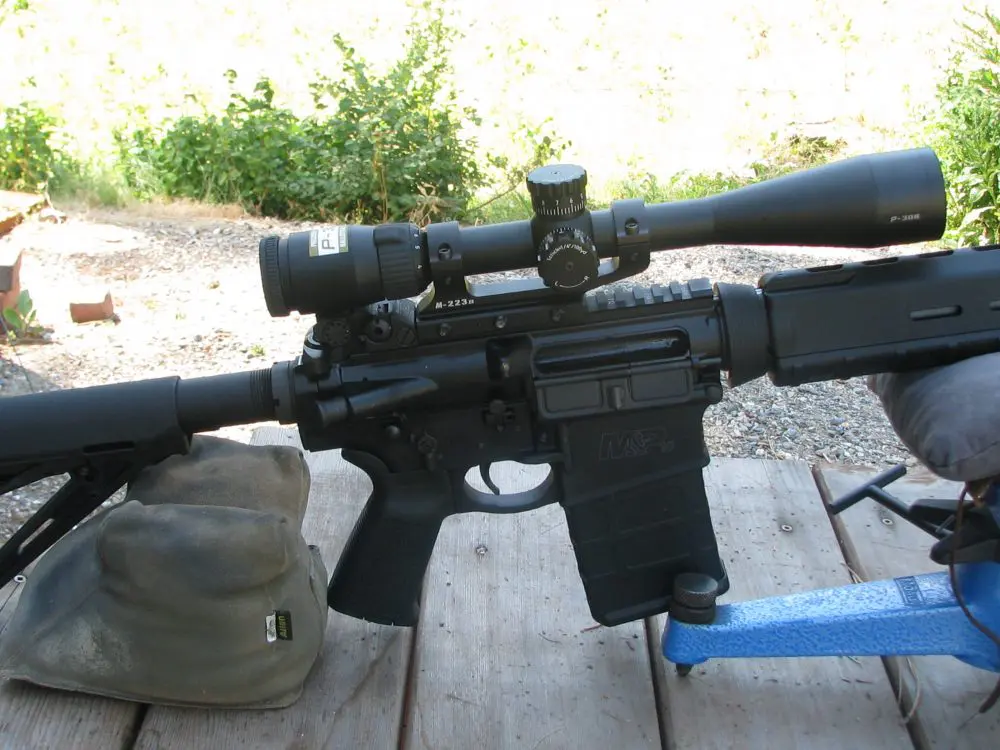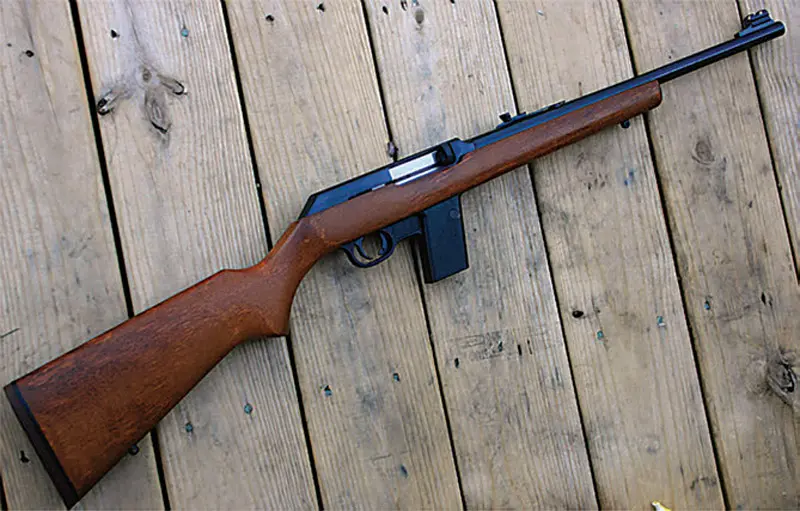
COPS have been armed with a handgun for years. A myriad of small-caliber revolvers gave way to the standardization of the .38 Special revolver, which became a staple of the law enforcement community for nearly 90 years. As time progressed, that sixshooter gave way to the semiautomatic pistol, a more efficient and useful weapon. Not only was the onboard ammunition capacity increased, but reloading was also simplified.
Though city cops were not always armed—in some places as late as the 1890s—lawmen in rural areas of this country were armed with pistols or revolvers as well as long guns. The majority of the long guns were rifles, but some carried shotguns for specific purposes.
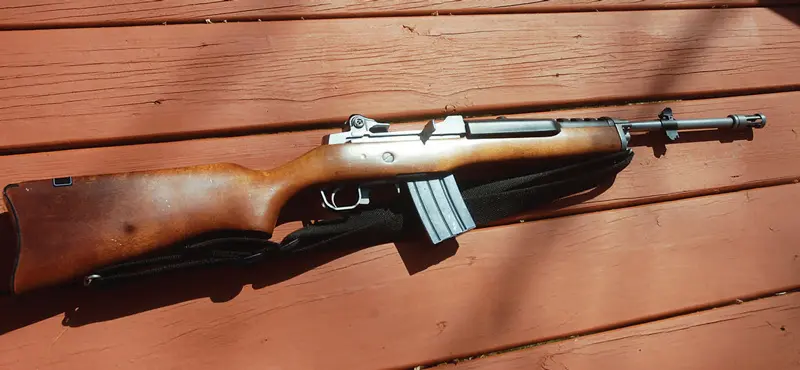
Table of Contents
HISTORICAL USE OF LONG GUNS BY LE
In those days, there were no Giants or Wal-Marts one could swing by to replenish food or supplies. The long gun was a game getter as well as a defensive tool.
The rifle was easier to shoot than a handgun, generally had better sights than the Single Action Army, and had a range that exceeded whatever a handgun could realistically do. Having a rifle was truly a no-brainer.
The rifle stayed with cops as a primary weapon up until the 1940s. The types of rifles used were as wide and varied as the agencies that used them. These included, but were not limited to:
- Winchester Model 94
- Winchester Model 1907
- Remington Model 8
- Model of 1903
- Model of 1917
- Browning Automatic Rifle Model of 1918
While some in the late 1920s to early 1930s might have used those rifles for game, the real reason was to combat the new mobile desperados who were similarly armed—and the bad guys often acquired their guns from police stations or National Guard armories.
At some ill-defined point but possibly the early 1940s, the rifle gave way to the shotgun as the long gun of choice for cops on patrol. The shotgun in turn gave way to the patrol rifle in the late 1990s, and that’s how it is today. The shotgun may still be used as the primary long gun, but sees more use as a less-lethal or breaching gun.
Problems with using the shotgun include the following: lack of training for almost all agencies, difficult manual of arms, problematic accuracy with slugs, short range with buckshot, and overpenetration indoors.
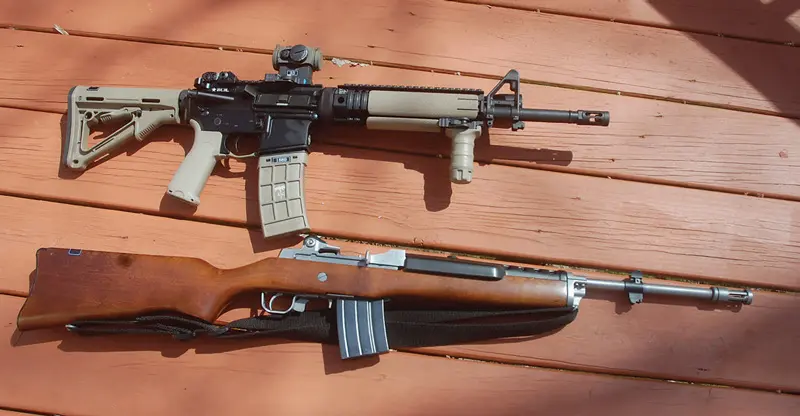
WHAT IS NOT A PATROL RIFLE?
Before we proceed, we should talk about what is not a patrol rifle.
In the past, some agencies used pistol-caliber long guns. Among them were the Colt 6450, Ruger Police Carbine and Marlin Camp Carbine. The rationale for sub-caliber guns was apparently part of the “Just The Tip Syndrome.” In the words of one police executive, “We wanted something more than a pistol, but something that appeared non-threatening.”
And they got exactly what they asked for—a subpar performer that offended no one, including the bad guys.
The sub-caliber carbine was another deposit by the good idea fairy. It offered only a slightly better package than a pistol and soon mostly disappeared from the scene.
WHAT IS A PATROL RIFLE?
A general description of a patrol rifle is a 5.56x45mm semiautomatic or select-fire carbine with a nominal barrel length of 16 inches. It is, almost universally, an AR-15 type weapon. There are exceptions, of course. The Ruger Mini-14® was (and continues to be in some locations) used as a patrol rifle. The Mini was often chosen not because of any superiority as a weapons platform, but rather because it did not appear “military” in the eyes of the police executives who made decisions based on such nonsense.
More on the Mini later.
The AR-15 is truly America’s rifle. It is the most ubiquitous of all U.S. rifles and is probably going to be with us for a very long time. While this is excellent on one level, there are a multitude of other reasons. The AR has been in continual use by the military for almost 60 years, and any bugs inherent in the initial design have long since been worked out. It is ergonomic in that the controls are laid out properly, and it can be used as efficiently by wrong handers as well as right handers. It’s arguably the easiest rifle extant to manipulate. It’s accurate, reliable, and modular in that the platform can be modified to accept mission-essential equipment.
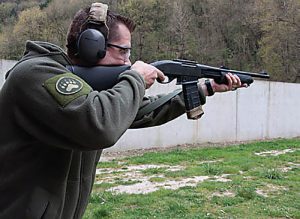
Different configurations are available to meet mission requirements. Good magazines are available in unbelievable numbers. The gun itself is available from a number of vendors, at prices ranging from cut rate to high end. And as with all things, you generally get what you pay for. Low-cost hobby guns are not sufficient for the task. Avoid the “least expensive” guns and instead look for “best value.”
ARs are also available to police agencies through the Department of Defense 1033 program. The guns that come from that program are usually arsenal reconditioned M16A1s. This is the early U.S. military gun, which was used until superseded by the M16A2 starting in 1983. While the M16A1 is useful as is, the 20- inch barrel and fixed stock make it difficult to manipulate inside a vehicle.
ON-DUTY CARRY
Which brings up another issue: where do you carry the gun while on duty? The simplest solution is also the least useful— carrying it in a bag in the trunk. While this keeps it out of view (apparently a major consideration for some administrators), it also keeps you from accessing the gun on the way to the job. And once you get there, you have to open the trunk, take the gun out of the soft/ hard case, charge it, and hope the bad guy hasn’t popped you or anyone else.
We are aware of one agency that issues the carbine in a Pelican Case with a lead seal attached. If they have to deploy the long gun, they have to open the trunk, break the seal and then, well, the cops couldn’t answer what the gun was or what was with the gun, as they had never seen it.
Others will keep the carbine up front but unsecured. This is a double-edged sword as it does allow you immediate access to the gun, but it also has a greater chance of being stolen.
The “A” answer is a lockable rack. This keeps the gun up front but also secures it against casual theft. The downside is that many racks will accept only a bone stock AR, not one with lights and optical sights. Additionally, some manufacturers are less than willing to provide T&E to agencies looking for the right rack.
The standard for keeping the guns up front is the Arcadia, California Police Department. Sergeant Dean Caputo started a program in the 1990s where every car has a Colt Commando in a rack between the seats.

More importantly, the cops are trained to sling up and charge the carbine while still in the car and responding to the job. When they exit the car, they’re ready to go.
The big question is this: If they can do it, how come others can’t/won’t?
MODIFYING THE 1033 GUN
As stated earlier, the 1033 guns are predominately M16A1s. The overall length of that gun is 39.5 inches, which may make it more difficult to carry up front.
The A1 can be converted into a more useful carbine with little effort. Several companies make complete uppers, to include the upper receiver, barrel and bolt carrier group. Anyone can make the upper switch: push out the two receiver pins, swap the A1 upper for a carbine upper, and you’re good to go.
Barrel length is normally 16 inches, the minimal length for a rifle barrel as determined by law. You can get a shortbarreled rifle (SBR) by completing the required paperwork with ATF. The most common and probably the most useful is the 14.5-inch barrel. Carbines that use the gas impingement system should use the 11.5-inch barrel as the shortest length you go to. If you use a piston AR, you can go down to 10 inches (or shorter).
Shorter barrels make the guns easier to handle inside confined spaces. But there’s a terminal ballistic penalty. This deficiency may not be apparent at the distances the patrol rifle might be used, usually within 100 yards.
The lower receiver, however, will require the services of an armorer. The original receiver extension (called by the unknowing a “buffer tube”) has to be changed to a carbine length; the buffer needs to be changed to a carbine buffer or an H2 buffer. And finally, you need a carbine stock.
One item that is a force multiplier is a Red Dot Sight (RDS). There are only two that you should consider—the Aimpoint and the EOTech. The Aimpoint has the value-added benefit of battery life that borders on stupendous. You do not need to turn it on or off, meaning it is one less thing you have to worry about if you need to deploy the gun in a hurry.
Having an RDS eliminates the problems with aligning sights. Simply place the dot on target and control the trigger straight to the rear.
Another must-have item is a weapon- mounted white light. The white light is not an accessory—it should be considered a part of the system. Though not a weapon, the light is a tool that permits you to acquire, identify and, if necessary, prosecute a threat.
Consider that you don’t want anything less than 200 lumens, and my preference is the 500-lumen SureFire Fury light. No, that much light will not make you blind, impotent, or suffer from male-pattern baldness. What it will do is light up a room as if you’d turned on a light switch. This increases your situational awareness, without which you may lose the fight.
SureFire still makes the best lights available at this time.

BACK TO THE MINI
The Mini-14 may not be an evil-looking weapon, but it has some flaws for use as a patrol rifle. The platform is not modular— adding red dot sights, white lights and other mission-essential equipment is not readily accomplished. Factory magazines have been in relatively short supply ever since the gun was first introduced. Aftermarket magazines have spotty QC. The stock was not adjustable. While a folding stock was available, the length of pull was still as long as the fixed stock. Durability and reliability were poor compared to the AR. Maintenance was generally not available at the user level, and the gun often had to be removed to the factory.
While many criticize the accuracy of the Mini, those I have shot were within six MOA, putting it in the same boat as the M1, M14 and AK. The big issue is that the mechanical safety is inside the trigger guard, as with the U.S. Rifle M1 and U.S. Rifle M14. While that may simplify some engineering/ mechanical issues, having your finger inside the trigger guard except when pressing the trigger is foolish—and dangerous.
While some organizations used Minis for patrol and tactical teams, many (like NYPD ESU) have transitioned to the AR. Many corrections agencies use the Mini, and that may be a useful choice.

SLIDE ACTIONS
The good idea fairy struck at Remington around 2002, when it produced two slide-action guns ostensibly for cop use—the Model 7600 and the 7615.
The 7600 was a .308 pump gun, and the 7615 was a .223 gun. Strangely, the 7615 series used AR magazines, and one model used an AR stock. The thought was that it would introduce a platform that was similar to the Remington 870 shotgun, which was already in use by many agencies. It was sold as being easier to train cops because they had already trained on the excellent 870 shotgun, but that was clearly a statement without fact.
The issues should have been obvious. The first is that precious few receive anything like sufficient training with the shotgun, and that negates any commonality of training. And while the 870 is ubiquitous, there are also many Mossberg, Ithaca and Winchester shotguns in police armories. All of those shotguns have slightly different manuals of arms than the Remington, making the commonality theory meaningless.
The second problem is that the shotgun commonly used either slugs or some form of buckshot. The shotgun is not exactly accurate, but at limited engagement distances, it is probably sufficient. Any round used defensively by cops or civilians is generally more accurate than the people using it.
Having said that, nothing that you can hold in one or two hands can be guaranteed to end a threat with a single round. This is why all training consists of multiple rapid shots delivered by sighted fire to center mass of what is available.
Trying to deliver rapid, accurate shots with a slide-action .223 gun can be an exercise in futility. The only apparent benefit is that it doesn’t look threatening. To draw an analogy, maybe all cop cars should be a Mini Cooper or Prius … or maybe a Mommy Van. Remington makes some good guns, but not all guns are useful in some roles.
BACK TO REALITY
When making any purchase, do not get roped in by charlatans claiming that “their” gun/optic/magazine/sling is “just as good as” the real deal. There is very little difference between first-tier and hobby guns, and in the long run the former will actually work instead of giving you headaches.
No matter what you choose, understand that a gun without training is a liability, not an asset. There should be an initial training period followed by regularly scheduled sustainment training. Qualification is not training, but rather an administrative issue.
Make sure to budget sufficient ammunition into the mix. Don’t be like the agency that bought a large number of guns but no ammo. They scraped up eight rounds per man so they could get a zero, but nothing else.
Having patrol rifles available to those trained to use them can be beneficial not only to the cops who use them but also to the citizens they protect.
The Patrol Rifle program has been extremely successful and popular throughout the United States, though the application of the program is sometimes flawed.


